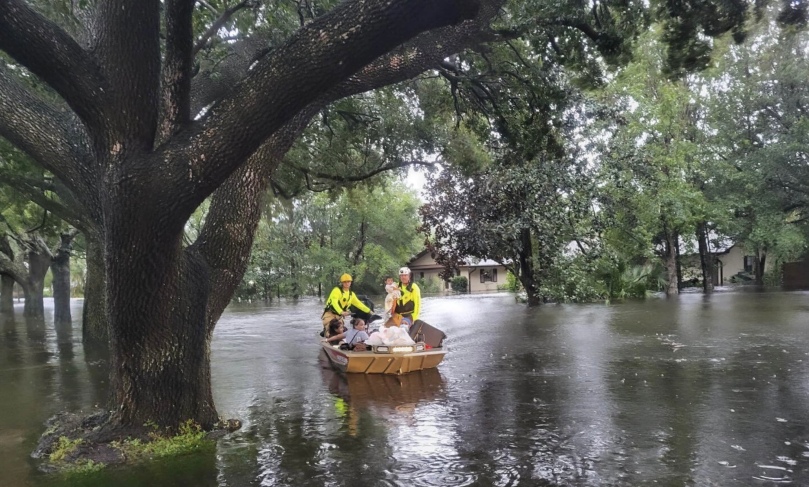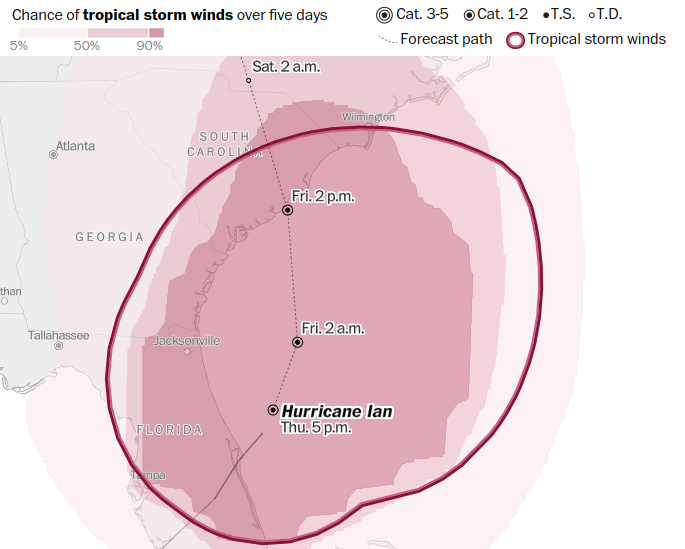Florida is now going through the grim process of counting the dead and trying to rebuild across Florida after Ian. But first, the maps.
Ian has reformed and strengthened back into at least a category one hurricane. It may continue to strengthen up one more category before landfall. Keep in mind that the warm waters of the Gulf Stream, which starts in the Gulf of Mexico, flows up the Atlantic seaboard, over which Ian is moving right now. More weather energy for Ian. And if it keeps on the current track, then the mid-West which includes Ohio is right in its track as a depression. A very large, rain-maker depression.
Once again you can get a much better idea of how Ian is effecting Florida’s weather. Note that tropical storm winds are reaching as far south-west as Tampa. Still. Florida won’t be free of Ian’s influence until Ian makes landfall on South Carolina, sometime Friday afternoon.
Believe it or not the overall number of Floridian’s without power has dropped some 200,000 customers. I have no idea where, but the total is going down. It’s going to be a long process, and there will be substantial numbers who will go for a week or more without power, just like I did back in 2004 with Charley in Orlando. I have hovered over the county of Orlando, where I live, to give you a feeling of how many are without power. Keep in mind Orange County and Orlando were “merely” side-swiped by tropical storm Ian, not hit full-on by category four hurricane Ian. And yet we still suffered damage and flooding, nothing like Punta Gorda and Fort Myers, but still.
A few photos from TheGuardian.


This is the rich section of Fort Myers, right on the shore. All those rich people’s boats in the foreground, and all those condos rising up in the back. This is the aftermath when you mix a category four hurricane with far too much expensive land development right on the Gulf shore. I have no idea how much is insured, and how much might be made whole by insurance. But this development should not be here. And yet it is, and representative of too many communities on both the Gulf and Atlanta coasts. Think of Miami…

I say “possible retirement community” because this is the type of inexpensive construction that my wife’s mother used to build her retirement home up in Ocala, Florida. Simple frame houses with a car port on each side. And if this is the case, then how will these people pay to rebuild their homes?
It goes without saying that a lot of the critically damaged structures won’t come back. The people on whose backs this will predominantly fall will be those who are the most economically disadvantaged, such as retirees on fixed incomes. Our current state government is woefully ill equipped to deal with this on all levels.






You must be logged in to post a comment.